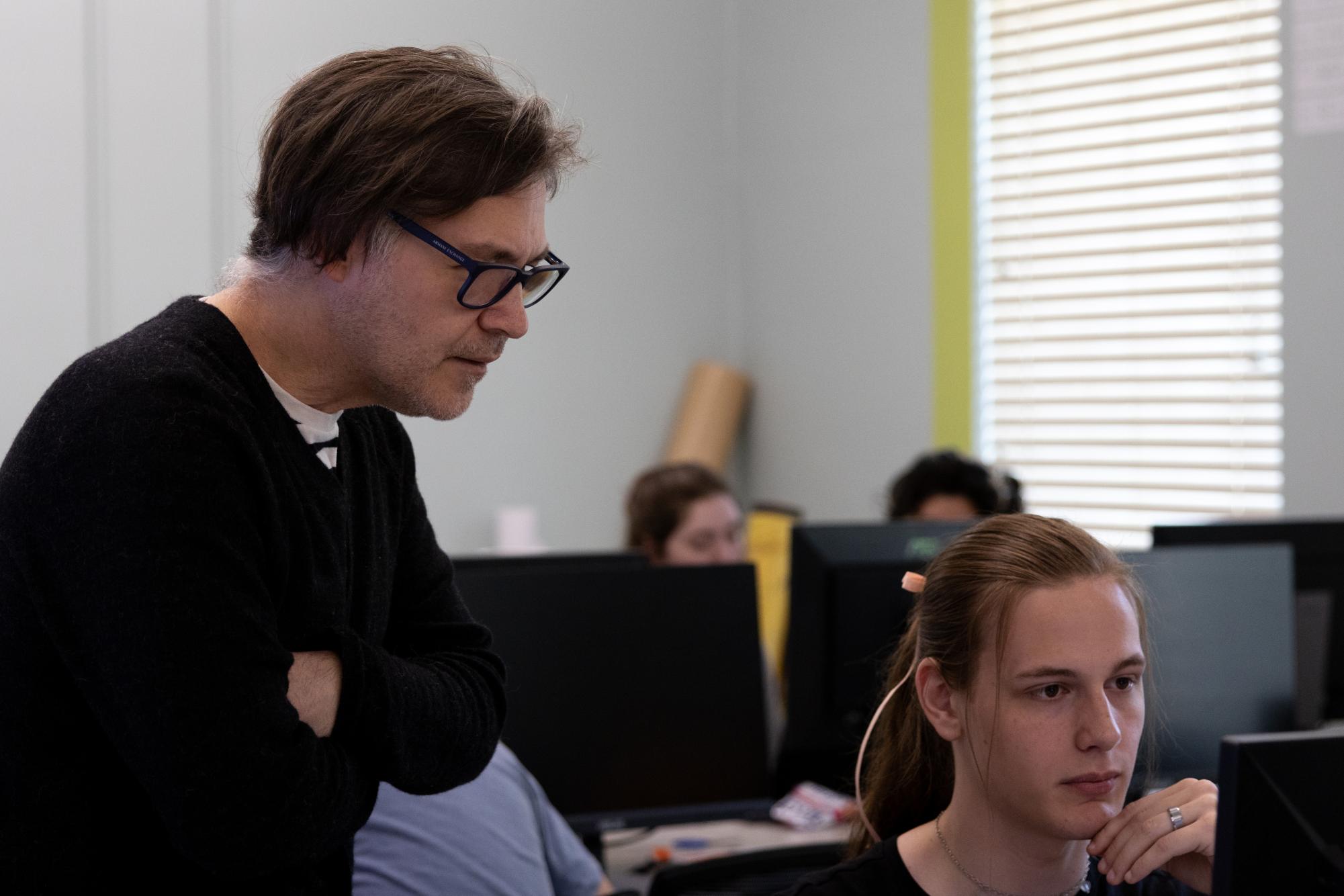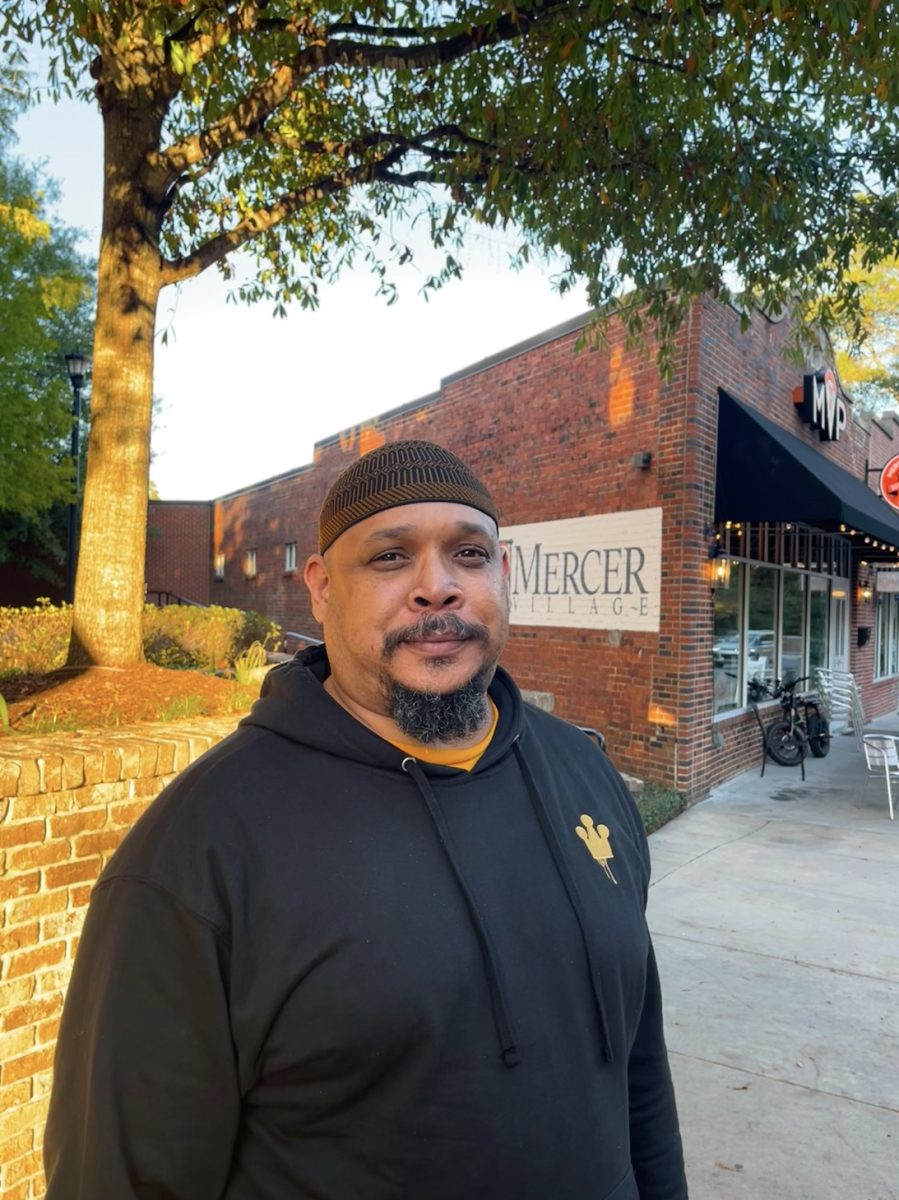The rise of generative artificial intelligence (AI) in art has sparked debate surrounding job security for graphic designers.
Graphic design’s industry-leading software provider, Adobe, released “Firefly” in 2023. Firefly is a generative AI software that turns user-input prompts into digital images. AI uses existing media and user instructions to learn. Setting parameters with the program’s “AI assistant” allows artists to develop visuals that emulate different art forms. For example, requesting brush stroke texture could help AI turn a photograph into a virtual painting.
“It makes me feel like there won’t be individuality,” said Taylor Erickson, a second-year graphic design student at Mercer University. “Because there’s only so much you can input into a computer. It doesn’t have a creative brain.”
Users can instruct AI to emulate specific artists’ styles. It happened to Greg Rutkowski, a well-known illustrator in the gaming industry. In an article for Forbes, senior contributor Rob Salkowitz wrote that Rutkowski’s name turned up “hundreds of thousands of images” in image prompts entered by users. Rutkowski told Salkowitz that the AI had generated more art in his style than he has, owing to the fact that AI software can work on demand, without taking breaks.
“I’m scared, being completely honest,” said Erickson. “I really hope that people won’t be able to program it to be better than me.”
Craig Coleman, professor and co-chair of the Art department at Mercer University in Macon, GA., argues that existing media inspires both humans and AI.
“As human beings, we don’t just forget all the things we see,” said Coleman. “It goes into us and, and it affects us, and it influences us.”
Coleman sees AI in art as a tool rather than a threat. New ideas promote individuality. As humans are still prompting the concept, he feels AI artwork can be original.
Critical Theorist and Philosopher Benjamin Walter concluded that lack of user satisfaction with existing technologies leads to new inventions. He defined this concept as mechanical reproduction. For example, people became bored with static photographs and invented flipbooks, according to Coleman. From this, photography led to animation, which led to recording and projecting for movie making. Walter is best known for analyzing the implications of mechanical reproduction in art.
Cameras in the 19th century could not satisfy artists’ photo manipulation needs. So, pioneers such as Oscar Rejlander began combining photo negatives. This process, known as photomontage, can create “dreamlike” images that cannot naturally occur, such as a person floating in the water.
“Not too many years after that is when the first version of Photoshop came out,” said Coleman. “And that’s what it does best, right? It does collage better than anything before it.”

Adobe Photoshop is a tool to create digital photomontages. The software did not replace photography. Coleman said a similar ideology can be applied to AI. He sees the introduction of AI in art as an opportunity to push the boundaries of current technology.
“It’s probably actually helping to create more interest in handmade objects and learning for individuals,” said Coleman.
He believes counterculture, the desire to differ from mainstream culture, offers artists job security. Coleman said people will inevitably practice artforms to set themselves apart if AI art becomes the “dominant” technology.
“I’ve had enough, you know, peanut butter and jelly. Now I want, you know, a salad instead,” said Coleman. “So one technology comes in and takes over, but then that creates interest in another area that was maybe forgotten about.”
Film cameras lost popularity as digital was invented. Sales in digital cameras dipped after the introduction of camera phones. Coleman thinks easy access to digital photography has led to film cameras being considered trendy.
Erickson thinks AI will always need an operator, which she finds comforting.
“Makes me happy. Makes me not as scared, because there’s going to be a time where a company is going to run out of ideas,” said Erickson. “ You have to be able to be creative to know how to use AI.”
Producing a design is only half of a graphic designer’s job. The first step is to have an idea. Robert Kozma Ph.D. admits organizations will prioritize saving costs. But, that doesn’t mean graphic designers will be eliminated. He suggests redefining design. Kozma asserts eliminating graphic design jobs will create opportunities for a newly rising career: AI designers.
Job hunting platforms, such as DesignerHire.com, have started compiling lists of websites to help AI designers searching for jobs.
“So the big question is like, what do we really want?” said Coleman. “What are AI’s limits? And then what are we going to push technology into after that? That’s, I think, that’s an interesting question.”
While the age of AI feels uncomfortable to many designers, other artists are excited to push new boundaries.









